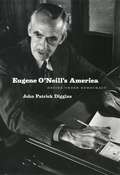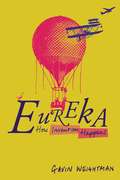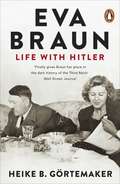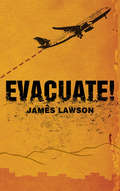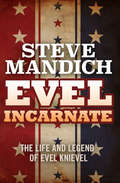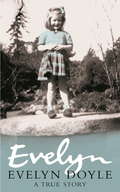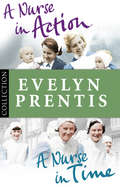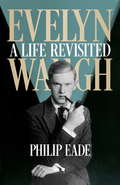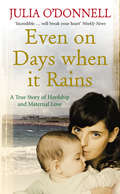- Table View
- List View
Eugene Braunwald and the Rise of Modern Medicine
by Thomas H. LeeMuch of the improved survival rate from heart attack can be traced to Eugene Braunwald's work. He proved that myocardial infarction was an hours-long dynamic process which could be altered by treatment. Thomas H. Lee tells the life story of a physician whose activist approach transformed not just cardiology but the culture of American medicine.
Eugene O'Neill's America: Desire Under Democracy (Phoenix Poets Ser.)
by John Patrick DigginsIn the face of seemingly relentless American optimism, Eugene O’Neill's plays reveal an America many would like to ignore, a place of seething resentments, aching desires, and family tragedy, where failure and disappointment are the norm and the American dream a chimera. Though derided by critics during his lifetime, his works resonated with audiences, won him the Nobel Prize and four Pulitzer, and continue to grip theatergoers today. Now noted historian John Patrick Diggins offers a masterly biography that both traces O’Neill’s tumultuous life and explains the forceful ideas that form the heart of his unflinching works. Diggins paints a richly detailed portrait of the playwright’s life, from his Irish roots and his early years at sea to his relationships with his troubled mother and brother. Here we see O’Neill as a young Greenwich Village radical, a ravenous autodidact who attempted to understand the disjunction between the sunny public face of American life and the rage that he knew was simmering beneath. According to Diggins, O’Neill mined this disjunction like no other American writer. His characters burn with longing for an idealized future composed of equal parts material success and individual freedom, but repeatedly they fall back to earth, pulled by the tendrils of family and the insatiability of desire. Drawing on thinkers from Emerson to Nietzsche, O’Neill viewed this endlessly frustrated desire as the problematic core of American democracy, simultaneously driving and undermining American ideals of progress, success, and individual freedom. Melding a penetrating assessment of O’Neill’s works and thought with a sensitive re-creation of his life, Eugene O’Neill’s America offers a striking new view of America’s greatest playwright—and a new picture of American democracy itself.
Eugene O'Neill's America: Desire Under Democracy
by John Patrick DigginsIn the face of seemingly relentless American optimism, Eugene O’Neill's plays reveal an America many would like to ignore, a place of seething resentments, aching desires, and family tragedy, where failure and disappointment are the norm and the American dream a chimera. Though derided by critics during his lifetime, his works resonated with audiences, won him the Nobel Prize and four Pulitzer, and continue to grip theatergoers today. Now noted historian John Patrick Diggins offers a masterly biography that both traces O’Neill’s tumultuous life and explains the forceful ideas that form the heart of his unflinching works. Diggins paints a richly detailed portrait of the playwright’s life, from his Irish roots and his early years at sea to his relationships with his troubled mother and brother. Here we see O’Neill as a young Greenwich Village radical, a ravenous autodidact who attempted to understand the disjunction between the sunny public face of American life and the rage that he knew was simmering beneath. According to Diggins, O’Neill mined this disjunction like no other American writer. His characters burn with longing for an idealized future composed of equal parts material success and individual freedom, but repeatedly they fall back to earth, pulled by the tendrils of family and the insatiability of desire. Drawing on thinkers from Emerson to Nietzsche, O’Neill viewed this endlessly frustrated desire as the problematic core of American democracy, simultaneously driving and undermining American ideals of progress, success, and individual freedom. Melding a penetrating assessment of O’Neill’s works and thought with a sensitive re-creation of his life, Eugene O’Neill’s America offers a striking new view of America’s greatest playwright—and a new picture of American democracy itself.
Euphoria
by Elin CullhedSHORTLISTED FOR THE BERNARD SHAW PRIZE A woman’s life, erupting with brilliance and promise, is fissured by betrayal and the pressures of duty. What had once seemed a pastoral family idyll has become a trap, and she struggles between being the wife and mother she is bound to be and yearning for so much more. The woman in question is Sylvia Plath in the final year of her life. As Plath’s marriage to Ted Hughes unravels, Sylvia turns increasingly to writing to express her pain and loss, yet also her resilience and power. She has decided to die, but the art she creates in her final weeks will set her name, and the world, ablaze.
Euphoric Recall
by Aidan Martin"As a schoolboy already caught up in addiction, I stood outside of a McDonald's waiting for a man I thought was my friend. A friend I met online. It would change my life forever. I was a streetwise kid growing up in a tough housing scheme, but the Internet was a new phenomenon. Euphoric Recall details my recovery from extreme trauma and addiction. As a Scottish working-class lad who grew up in a new town – Livingston – I also survived brutal experiences with suicide, violence, and severe mental health issues. One day I decided to write a memoir about it. I hold nothing back." — Aidan Martin Euphoric Recall is the powerful true story of a Scottish working-class lad and his recovery from addiction and trauma. "A truly essential read for those interested in lived experiences – and not just statistics." – Darren 'Loki' McGarvey, author of Poverty Safari (Orwell Prize 2018). "Aidan Martin delivers a gritty gut-punch memoir about the realities and complexities of addiction. Raw, honest and insightful, Aidan shows the reader how compulsion and addiction are just the tip of a much deeper iceberg that has sunk many a Titanic. And in his story, we see that addiction in the 21st century can have many varieties and flavors to escape the shame, emptiness and suffering that so many are struggling with in the Digital Age." — Dr. Nicholas Kardaras, author of Glow Kids, Addiction Expert, Professor Stony Brook Medicine
Eureka!: Science's Greatest Thinkers and Their Key Breakthroughs
by Hazel MuirFrom Aristotle's pioneering research into animal biology to Harvey's theory of the circulation of the blood; from Copernicus's theory of the heliocentric universe to Carl Sagan's speculations on extraterrestrial life; and from Einstein's theory of Relativity to Heisenberg's uncertainty principle, Eureka! condenses the essential biographies and principal discoveries of the world's most important scientistsinto 300 bite-sized entries. Spanning the full spectrum of scientific disciplines - including physics, biology, earth science, cosmology, chemistry, archaeology and behavioural science - this book is the perfect introduction to the pioneering work of scientists throughout the ages.
Eureka: How Invention Happens
by Gavin WeightmanTracing the long pre-history of five twentieth-century inventions which have transformed our lives, Gavin Weightman reveals a fantastic cast of scientists and inspired amateurs whose ingenuity has given us the airplane, television, bar code, personal computer, and mobile phone. Not one of these inventions can be attributed to a lone genius who experiences a moment of inspiration. Nearly all innovations exist in the imagination before they are finally made to work by the hard graft of inventors who draw on the discoveries of others. While the discoveries of scientists have provided vital knowledge which has made innovation possible, it is a revelation of Weightman’s study that it is more often than not the amateur who enjoys the “eureka moment” when an invention works for the first time. Filled with fascinating stories of struggle, rivalry, and the ingenuity of both famous inventors and hundreds of forgotten people, Weightman’s captivating work is a triumph of storytelling that offers a fresh take on the making of our modern world.
European Diary, 1977-1981
by Roy JenkinsFirst published in 1989, this diary provides the background to two vital issues: our relations with the European Community and the state of politics in Britain. Few people are better qualified to know how we arrived where we are than Roy Jenkins. During the period of this diary he was President of the European Commission. The diary provides a picture of the day-to-day life of the head of an international organization, of the conflicting pressures and grinding routine, of the importance of personal relationships with world leaders such as Helmut Schmidt, Valéry Giscard d'Estaing, James Callaghan, Margaret Thatcher, Willy Brandt, Jean Monnet and Jimmy Carter.In addition to the political chronicle we have frank and sometimes unguarded revelations about the author, his tastes and preoccupations, from which emerges a man more imbued with public passion, more eccentric and with a more varied private life than many readers may expect. His subtle perception of people is revealed in brilliant portraits of, for example, Schmidt, pessimistic, streaked with melancholy, indiscreet and yet notably constructive, and Giscard d'Estaing, highly intelligent but with pretentions that sometimes make him faintly ludicrous.For those concerned with the way the world is developing and the impact of a civilized and essentially private personality on public events, European Diary is compulsory reading.
Europe's Last Chance: Why the European States Must Form a More Perfect Union
by Guy VerhofstadtIn the heart of Europe's current crisis, one of the continent's foremost statesmen issues a clarion call to radically remake the European Union in the mold of the United States' own federal governmentEurope is caught in its greatest crisis since the Second World War. The catalog of ills seems endless: an economic crisis spread through most of Europe's Mediterranean tier that has crippled Greece and driven a wedge between northern and southern Europe; terrorist attacks in Paris, Cologne, Brussels, and Nice; growing aggression from Russia in Ukraine and the Baltic states; and refugees escaping war-torn neighbors. The European Union's inability to handle any of these disasters was a driving factor in Great Britain voting to leave, and others may soon follow. The result won't just be a continent in turmoil, but also a serious threat to American and British security-the Atlantic, let alone the Channel, simply isn't big enough to keep European troubles in Europe. For everyone's sake, Europe must survive.The question is how. In Europe's Last Chance, Guy Verhofstadt-former prime minister of Belgium and current leader of the liberal faction in the European Parliament-provides the essential framework for understanding Europe today, laying bare the absurdity of a system in which each member state can veto legislation, opt in or out of the Euro, or close borders on a whim. But Verhofstadt does not just indict the European Union, he also offers a powerful vision for how the continent can change for the better. The key, argues Verhofstadt, is to reform the European Union along the lines of America's federal government: a United States of Europe strong enough to stand with the United States of America in making a better, safer world.A visionary book from one of today's luminaries of European leadership, Europe's Last Chance is a clarion call to save the European Union, one of the world's greatest chances for peace and prosperity.
Europe's Last Chance: Why the European States Must Form a More Perfect Union
by Guy VerhofstadtIn the heart of Europe's current crisis, one of the continent's foremost statesmen issues a clarion call to radically remake the European Union in the mold of the United States' own federal government Europe is caught in its greatest crisis since the Second World War. The catalog of ills seems endless: an economic crisis spread through most of Europe's Mediterranean tier that has crippled Greece and driven a wedge between northern and southern Europe; terrorist attacks in Paris, Cologne, Brussels, and Nice; growing aggression from Russia in Ukraine and the Baltic states; and refugees escaping war-torn neighbors. The European Union's inability to handle any of these disasters was a driving factor in Great Britain voting to leave, and others may soon follow. The result won't just be a continent in turmoil, but also a serious threat to American and British security-the Atlantic, let alone the Channel, simply isn't big enough to keep European troubles in Europe. For everyone's sake, Europe must survive. The question is how. In Europe's Last Chance, Guy Verhofstadt-former prime minister of Belgium and current leader of the liberal faction in the European Parliament-provides the essential framework for understanding Europe today, laying bare the absurdity of a system in which each member state can veto legislation, opt in or out of the Euro, or close borders on a whim. But Verhofstadt does not just indict the European Union, he also offers a powerful vision for how the continent can change for the better. The key, argues Verhofstadt, is to reform the European Union along the lines of America's federal government: a United States of Europe strong enough to stand with the United States of America in making a better, safer world. A visionary book from one of today's luminaries of European leadership, Europe's Last Chance is a clarion call to save the European Union, one of the world's greatest chances for peace and prosperity.
Eva Braun: Life With Hitler
by Heike B. Gortemaker Damion SearlsDAILY TELEGRAPH BOOKS OF THE YEAR and BBC HISTORY MAGAZINE BOOK CLUB title'I want to be a beautiful corpse, I will take poison' Eva Braun, 1945Eva Braun and Adolf Hitler were together for fourteen years, a relationship that ended only with their marriage and double suicide in Berlin. Braun was obsessed with sport, fashion, photography and films, and seems to have had no real interest in politics. She and Hitler were unmarried and they had no children. And so, at the heart of the Nazi regime there was an odd paradox: the leader of a ferocious dictatorship, himself obsessed with imposing an idea of the 'German family' on an entire nation, who chose to spend much of his adult life with a woman 23 years younger than himself in a way that was unideological and bohemian.So who was Eva Braun? Heike Görtemaker's highly praised new book is the first to take Braun's role in the Nazi hierarchy seriously. It uses her to throw fascinating light on a regime that prided itself on its harsh, coherent and unsentimental ideology, but which was in practice a chaos of competing individuals fighting for space around the overwhelmingly dominant figure of Hitler. Braun had a special place 'at court'. She was both marginal and exceptional: a more powerful figure than 'the First Ladies of the Third Reich' such as Magda Goebbels and Margarete Speer, but someone who almost never chose to use that power.Braun's life tells us a huge amount about a particular, catastrophic era in German history, both in her role as Hitler's companion and as the hostess at Nazi social events at the Berghof. Heike Görtemaker's book allows Braun to step out as much as possible from the shadows and fully inhabit her strange role at the heart of a terrible regime.
Eva Palmer Sikelianos: A Life in Ruins
by Artemis LeontisThe first biography of a visionary twentieth-century American performer who devoted her life to the revival of ancient Greek cultureThis is the first biography to tell the fascinating story of Eva Palmer Sikelianos (1874–1952), an American actor, director, composer, and weaver best known for reviving the Delphic Festivals. Yet, as Artemis Leontis reveals, Palmer’s most spectacular performance was her daily revival of ancient Greek life. For almost half a century, dressed in handmade Greek tunics and sandals, she sought to make modern life freer and more beautiful through a creative engagement with the ancients. Along the way, she crossed paths with other seminal modern artists such as Natalie Clifford Barney, Renée Vivien, Isadora Duncan, Susan Glaspell, George Cram Cook, Richard Strauss, Dimitri Mitropoulos, Nikos Kazantzakis, George Seferis, Henry Miller, Paul Robeson, and Ted Shawn.Brilliant and gorgeous, with floor-length auburn hair, Palmer was a wealthy New York debutante who studied Greek at Bryn Mawr College before turning her back on conventional society to live a lesbian life in Paris. She later followed Raymond Duncan (brother of Isadora) and his wife to Greece and married the Greek poet Angelos Sikelianos in 1907. With single-minded purpose, Palmer re-created ancient art forms, staging Greek tragedy with her own choreography, costumes, and even music. Having exhausted her inheritance, she returned to the United States in 1933, was blacklisted for criticizing American imperialism during the Cold War, and was barred from returning to Greece until just before her death.Drawing on hundreds of newly discovered letters and featuring many previously unpublished photographs, this biography vividly re-creates the unforgettable story of a remarkable nonconformist whom one contemporary described as “the only ancient Greek I ever knew.”
Eva Palmer Sikelianos: A Life in Ruins
by Artemis LeontisThe first biography of a visionary twentieth-century American performer who devoted her life to the revival of ancient Greek cultureThis is the first biography to tell the fascinating story of Eva Palmer Sikelianos (1874–1952), an American actor, director, composer, and weaver best known for reviving the Delphic Festivals. Yet, as Artemis Leontis reveals, Palmer’s most spectacular performance was her daily revival of ancient Greek life. For almost half a century, dressed in handmade Greek tunics and sandals, she sought to make modern life freer and more beautiful through a creative engagement with the ancients. Along the way, she crossed paths with other seminal modern artists such as Natalie Clifford Barney, Renée Vivien, Isadora Duncan, Susan Glaspell, George Cram Cook, Richard Strauss, Dimitri Mitropoulos, Nikos Kazantzakis, George Seferis, Henry Miller, Paul Robeson, and Ted Shawn.Brilliant and gorgeous, with floor-length auburn hair, Palmer was a wealthy New York debutante who studied Greek at Bryn Mawr College before turning her back on conventional society to live a lesbian life in Paris. She later followed Raymond Duncan (brother of Isadora) and his wife to Greece and married the Greek poet Angelos Sikelianos in 1907. With single-minded purpose, Palmer re-created ancient art forms, staging Greek tragedy with her own choreography, costumes, and even music. Having exhausted her inheritance, she returned to the United States in 1933, was blacklisted for criticizing American imperialism during the Cold War, and was barred from returning to Greece until just before her death.Drawing on hundreds of newly discovered letters and featuring many previously unpublished photographs, this biography vividly re-creates the unforgettable story of a remarkable nonconformist whom one contemporary described as “the only ancient Greek I ever knew.”
Eva Palmer Sikelianos: A Life in Ruins
by Artemis LeontisThe first biography of a visionary twentieth-century American performer who devoted her life to the revival of ancient Greek cultureThis is the first biography to tell the fascinating story of Eva Palmer Sikelianos (1874–1952), an American actor, director, composer, and weaver best known for reviving the Delphic Festivals. Yet, as Artemis Leontis reveals, Palmer’s most spectacular performance was her daily revival of ancient Greek life. For almost half a century, dressed in handmade Greek tunics and sandals, she sought to make modern life freer and more beautiful through a creative engagement with the ancients. Along the way, she crossed paths with other seminal modern artists such as Natalie Clifford Barney, Renée Vivien, Isadora Duncan, Susan Glaspell, George Cram Cook, Richard Strauss, Dimitri Mitropoulos, Nikos Kazantzakis, George Seferis, Henry Miller, Paul Robeson, and Ted Shawn.Brilliant and gorgeous, with floor-length auburn hair, Palmer was a wealthy New York debutante who studied Greek at Bryn Mawr College before turning her back on conventional society to live a lesbian life in Paris. She later followed Raymond Duncan (brother of Isadora) and his wife to Greece and married the Greek poet Angelos Sikelianos in 1907. With single-minded purpose, Palmer re-created ancient art forms, staging Greek tragedy with her own choreography, costumes, and even music. Having exhausted her inheritance, she returned to the United States in 1933, was blacklisted for criticizing American imperialism during the Cold War, and was barred from returning to Greece until just before her death.Drawing on hundreds of newly discovered letters and featuring many previously unpublished photographs, this biography vividly re-creates the unforgettable story of a remarkable nonconformist whom one contemporary described as “the only ancient Greek I ever knew.”
Eva Palmer Sikelianos: A Life in Ruins
by Artemis LeontisThe first biography of a visionary twentieth-century American performer who devoted her life to the revival of ancient Greek cultureThis is the first biography to tell the fascinating story of Eva Palmer Sikelianos (1874–1952), an American actor, director, composer, and weaver best known for reviving the Delphic Festivals. Yet, as Artemis Leontis reveals, Palmer’s most spectacular performance was her daily revival of ancient Greek life. For almost half a century, dressed in handmade Greek tunics and sandals, she sought to make modern life freer and more beautiful through a creative engagement with the ancients. Along the way, she crossed paths with other seminal modern artists such as Natalie Clifford Barney, Renée Vivien, Isadora Duncan, Susan Glaspell, George Cram Cook, Richard Strauss, Dimitri Mitropoulos, Nikos Kazantzakis, George Seferis, Henry Miller, Paul Robeson, and Ted Shawn.Brilliant and gorgeous, with floor-length auburn hair, Palmer was a wealthy New York debutante who studied Greek at Bryn Mawr College before turning her back on conventional society to live a lesbian life in Paris. She later followed Raymond Duncan (brother of Isadora) and his wife to Greece and married the Greek poet Angelos Sikelianos in 1907. With single-minded purpose, Palmer re-created ancient art forms, staging Greek tragedy with her own choreography, costumes, and even music. Having exhausted her inheritance, she returned to the United States in 1933, was blacklisted for criticizing American imperialism during the Cold War, and was barred from returning to Greece until just before her death.Drawing on hundreds of newly discovered letters and featuring many previously unpublished photographs, this biography vividly re-creates the unforgettable story of a remarkable nonconformist whom one contemporary described as “the only ancient Greek I ever knew.”
Eva Perón: The Myths of a Woman
by Julie TaylorEva Perón, one of the most powerful women in the world at the time of her death in 1952, rose from humble origins to international renown as First Lady of Argentina and the force behind the throne of her husband Juan Perón. Despite her immense popularity, she was inaccessible to the people of Argentina, and so images were constructed around her to fill that void. According to Julie M. Taylor, these "myths" around Eva Perón reflect Argentine culture and political history at the time of her seven-year reign. With a brief biography of Eva Perón serving as a backdrop, Taylor offers a detailed analysis of the principle myths that grew around this enigmatic woman. "Taylor shows that she is remembered by different classes and political factions as saint, a revolutionary, or a whore, depending on whether she was interpreted as an embodiment or as a violation of the Argentine feminine ideal."—Booklist "Highly commendable . . . it deliberately eschews the sensationalism that characterizes earlier [biographies]. . . . Taylor instead concentrates on the myths that have lingered since her death. . . . [This book] transcends biography."—Gentlemen's Quarterly "[A] concise and brilliant examination of the legends that arose in Argentina during the lifetime . . . of a woman who broke with Argentine tradition and became a political figure in her own right."—New Yorker
Evacuate!
by James LawsonAt stake was up to 5 million barrels a day of high-grade crude oil. At risk were the lives of 1,300 employees of the major oil companies and their families working in Iran in December 1978, when revolutionaries overthrew the Shah and wanted everything that went with him - including Western oil personnel - out of the country, or dead. At the helm was the author of this personal and highly revealing memoir. A Scottish lawyer working for the French oil company, Total, in Ahwaz, he had to draw on every inner resource - and unknown telex skills - to airlift his wife, friends, colleagues and others safely out of Iran, first to Abadan and thence to Bahrain and Athens. A senior American manager had already been murdered. These were anxious times for expatriate communities on the Gulf. Evacuate! is essentially a story of frontier life in a state run by a dictatorial Shah that tragically turned back the clock and submitted to clerical rule under Khomeini. As Centurion tanks and troops filled the streets, to be replaced by armed thugs chanting death slogans to Westerners, the author laboured night and day to organise a safe way out. Especially relevant today, his story will appeal to petroleum buffs everywhere, to expatriates, and to lovers of that beautiful and misguided country - Iran.
Evel Incarnate: The Life and Legend of Evel Knievel
by Steve MandichHe was not a rock'n'roll star, cartoon character, religious figure, professional wrestler, writer, or politician. Nor was he famous for being an artist, comic book superhero, television personality, or movie star. He wasn't exactly an athlete either. Granted, he wore a few of these hats at various points throughout his career, but his fame primarily emanated from an obscure occupation which he made entirely his own.Arguably, no other figure in popular culture outside these realms had an impact which resulted in global notoriety, generated millions of dollars in merchandise, inspired widespread imitation, and yet was a constant source of controversy. He was a genuine celebrity, and at the height of his career, he was one of the most talked-about men in America.In Evel Incarnate, Steve Mandich vividly recounts the life and the legend of Evel Knievel -a relentless self-mythologizer, abetted by an international community of fans. They were hungry for a real-life super-hero, and waited with bated breath for the summit of his career: the much heralded, now infamous, Snake River Canyon jump.But the truth about this motorcycle daredevil is as fascinating, extraordinary and injury-laden as any of the legends he could promote. Incisive, witty and informed, Evel Incarnate is the Evel Knievel biography by which all others must be measured.
Evelyn: A True Story
by Evelyn DoyleTold through the eyes of his daughter Evelyn, this is the true story of a father's fight to reclaim his children from the Irish government in the 1950s, now a major film.Desmond Doyle, 29, a painter and decorator, is married with six children and living in the infamous Fatima Mansions in Dublin in 1953. One day he comes home to find his wife has left him. He decides to go to England to find work and is advised to put his children into the state Industrial Schools system for a short time until he returns. When he returns he is told to his horror that the children have been consigned to the state until they are 16. This is the story of how Desmond Doyle fought the Irish legal system to change the law and win back his family.
Evelyn Prentis Bundle: A Nurse in Time/A Nurse in Action
by Evelyn PrentisDesperate circumstances were something Evelyn Prentis had to get very used to when she began her life as a nurse. It was in 1934 that Evelyn left home for the first time to enrol as a trainee at a busy Nottingham hospital in the hope of £25 a year. A Nurse in Time is Evelyn's affectionate and funny account of those days of dedication and hardship, when never-ending nightshifts, strict Sisters and permanent hunger ruled life, and joy was to be found in a late-night pass and a packet of Woodbines.The second memoir in this collection is A Nurse in Action. Surprising Matron as well as herself, Evelyn Prentis managed to pass her Finals and become a staff-nurse. Encouraged, she took the brave leap of moving from Nottingham to London - brave not least because war was about to break. Not only did the nurses have to cope with stray bombs and influxes of patients from as far away Dunkirk, but there were also RAF men stationed nearby - which caused considerable entertainment and disappointment, and a good number of marriages ...But despite all the disruption to the hospital routine, Evelyn's warm and compelling account of a nurse in action, shows a nurse's life would always revolve around the comforting discomfort of porridge and rissoles, bandages and bedpans.
Evelyn Waugh: A Life Revisited
by Philip Eade'Brisk, lively and wonderfully entertaining' John Banville'Excellent ... read this book' Literary Review'The best single-volume life of the author available' Irish TimesThe much mythologised author of Decline and Fall, A Handful of Dust and Brideshead Revisited was hailed by Graham Greene as 'the greatest novelist of my generation', yet reckoned by Hilaire Belloc to have been possessed by the devil. Evelyn Waugh's literary reputation has continued to rise since Greene's assessment in 1966. Fifty years after his death, Philip Eade draws on extensive unpublished sources to paint a fresh and compelling portrait of this endlessly fascinating man, telling the full story of his dramatic, colourful and frequently bizarre life.
Even on Days when it Rains: A True Story of Hardship and Maternal Love
by Julia O'DonnellIrish singing star Daniel O'Donnell's mother, Julia, grew up on a remote island off the northwest coast of Ireland, going barefoot and doing hard labour as as child during the poverty-stricken 1920s.The hard work continued through her teenage years as she picked potatoes in the fields and travelled to Scotland to gut fish in the ports. After she married, Julia's beloved husband, Francie, was forced to work away from home for months on end. Physically demanding, the work eventually took its toll and Julia found herself widowed and penniless with five children while still in her forties.In this classic and inspiring story of triumph over adversity, Julia tells how she battled through this dark period by knitting sweaters into the early hours of the morning to support her family. Then, in an amazing twist of fate, this hard-working woman and dedicated mother watched from the wings as her offspring flourished. Her daughter Margaret and son Daniel went on to achieve fame and fortune as chart-topping singers.Poignant, warm and laced with great humour, The Mother's Story is a tale of maternal love, hardship and sacrifice, and a fascinating insight into this remarkable Irish family's life.'I was six when my father died so my mother has been everything to me. Wherever I go I tell the world about my wonderful mother. I'm a singer today because of my mother's encouragement. She has been the biggest influence in my life.' Daniel O'Donnell
Even Silence Has An End: My Six Years of Captivity in the Colombian Jungle
by Ingrid BetancourtIngrid Betancourt's story - her exemplary courage, spirit and resilience - has captured the world's imagination. A politician and presidential candidate celebrated for her determination to combat the corruption and climate of fear endemic in Colombia, in 2002 she was taken hostage by FARC, a terrorist guerrilla organisation. She was held captive in the depths of the jungle for six and a half years, chained day and night for much of that time, constantly on the move and enduring gruelling conditions. She was freed and reunited with her children and relatives in 2008.It is Betancourt's indomitable spirit that drives this important and deeply moving book, telling in her own words the extraordinary drama of her capture and eventual rescue, and describes her fight to survive, mentally and physically. As she confronts the horror of what she went through, her story also goes beyond the specifics of her own confinement to offer an intensely intelligent, thoughtful and compassionate reflection on what it means to be human.
Even The Stars Look Lonesome
by Dr Maya AngelouThere is no-one quite like Maya Angelou. Poet to the president, champion of the people, best-selling autobiographer, her experiences as dancer, singer, waitress, activist, director, teacher, wife and mother, have made her one of the few people truly qualified to share her lessons of a lifetime. With her customary courage and humour - and always with style and grace - she reflects on the people and places she has known. She talks about Africa and ageing, she gives us a profile of her great friend and 'daughter' Oprah Winfrey, she sings the praises of sensuality. But here too are her thoughts on the end of a much-wanted marriage, confessions of rage and the importance of solitude. EVEN THE STARS LOOK LONESOME is the work of a wonderful woman who is not afraid to admit to the mistakes and vulnerabilities that make us human.

